Rules forming tag question pdf
Questions and tags To ask a question in English you must usually use one of the auxiliary verbs ( be, do, have ) or a modal verb such as can, will, may . If you are expecting a yes/no answer, then the question starts with the auxiliary or modal.
Yes, but you need to think about what verb to use in the tag. If there is an auxiliary, a modal verb or the verb to be in the main clause, we use that in the question tag.
Question Formation in English – by Viv Quarry (www.vivquarry.com) There are two basic types of questions in English. 1. ‘Wh’ questions ask for specific information and start with a question word.
Forming questions. Home > Grammar & vocabulary resources > Grammar rules > Questions > Tweet; Structures of questions: If there is an auxiliary (helping) verb (be, have, can, will, etc), we put it before the subject (he, she, I, etc). Is anybody in the office? Have you ever visited London? What time will they be here? If there is no auxiliary (helping) verb, we put do, does or did before the
Non-negative tags are used after negative words like never, no, nobody, hardly etc.
FREE Tag Questions Worksheets. This section is full of worksheets that can help your students practice forming and using tag questions. There are currently 65 tag questions worksheets to choose from so you are bound to find something your class will enjoy. This is a clever worksheet that combines the classic game, tic-tac-toe, with tag question practice. It would be appropriate for learners of
Rules for Forming Question Tags To form the two-word tag questions, you must follow the rules below: The subject in the statement matches the subject in the tag.
Imperative question tags WordReference Forums

English Grammar Forming questions – Tag questions – Reverso
Question tags (also called tag questions) are common structures used in spoken English. An example of a question tag is: ‘You like studying English, don’t you ?’ The first part of a question tag sentence is the statement (‘You like studying English’) followed by the question form (‘don’t you?’)
28/02/2018 · It is not clear to me that these act as tags in the same way as standard question tags. It’s possible to argue that we are dealing with questions involving inversions. It’s possible to argue that we are dealing with questions involving inversions.
Add appropriate questions to the following sentences. In question tags we repeat the auxiliary verb used in the main sentence. Negative tags are used after affirmative sentences and non-negative tags are used after negative sentences. If the main sentence has no auxiliary, the question tag uses do
LATE TAG – Is when a tag is taken off the ball carrier after they have passed or kicked the ball. MARKER – Is the defending player who stands immediately and directly opposite the …
Rules in forming tag question?] A tag question is a statement ( a sentence ) that is converted into a question by adding, for example, an auxiliary verb and a pronoun.
A student can fully understand the rules but not yet be able to produce accurately formed questions under the time, energy, emotional stress of speech–but can get the formation right on a written test with time for monitoring her/his production. Or, the student could not have the rules right yet for a variety of reasons: a student might have heard the form but not had instruction about it, or
Tag questions are sentences with short questions, or tags, at the end of them. For example: “Keith is good at darts, isn’t he?” (A comma separates the first part of sentence from the tag.)
Positive and Negative Question Tags in English – Free English Grammar Rules Online Question Tags When the verb in the main sentence is in the present simple we form the question tag with do / does. You play the guitar , don’t you? Alison likes tennis, doesn’t she? If the verb is in the past simple we use did. They went to the cinema, didn’t they? She studied in New Zealand, didn’t she
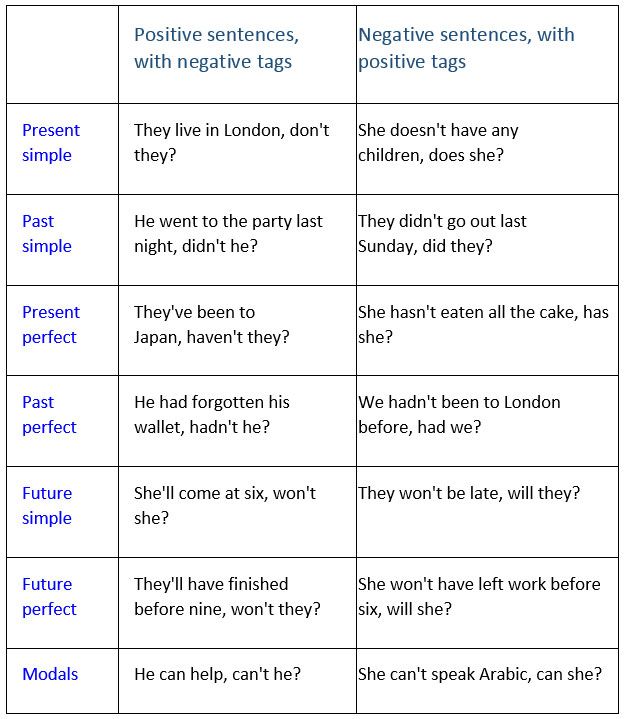
Question tags. Question tags are the short questions that we put on the end of sentences – particularly in spoken English. There are lots of different question tags but the rules are not difficult to learn.
Question Tags QUESTION TAGS – RULES AND EXAMPLES: 01. Question Tags will be ‘negative’ for positive sentences. ☞ Swathi is writing, isn’t she? _____ 02. Question Tags will be ‘positive’ for negative sentences. ☞ Raju is not going, is he? _____ 03. If the ‘verb’ is singular in the main statement, the verb in the question tag must also be singular. ☞ Julie plays well, doesn’t she? _____ 04
Questions tags are used to keep a conversation going. You can agree or refuse to a sentence with a question tag. You can agree or refuse to a sentence with a question tag. Affirmative sentence: He is from Germany, is n’t he ?
Question tags can either be ‘real’ questions where you want to know the answer or simply asking for agreement when we already know the answer. If the question tag is a real question …
If we want to ask for information we usually use the standard question form. However, sometimes we just want to keep a conversation going, or confirm information. In this case, question tags are often used to solicit input or confirmation to what we are saying.
Notes: The written lesson is below. Links to quizzes, tests, etc. are to the left. In Spanish, there may be several ways to ask the same question.
• Use finger highlighting to help the learner form a correct question. • When one learner has produced an accurate question, ask them to model it for the whole group and ask the group and individuals to …
Are there specific rules / conventions at play when creating demonyms? Or are they merely formed organically over time – the most popular winning out? There are many suffixes to choose from, but I
Question tags are short questions at the end of statements.They are mainly used in speech when we want to:confirm that something is true or not, orto.
There are a few basic rules: • If there’s an auxiliary (do/does, be, have) or modal auxiliary verb (can, must, need, etc.) in the main clause, this is repeated in the question tag.
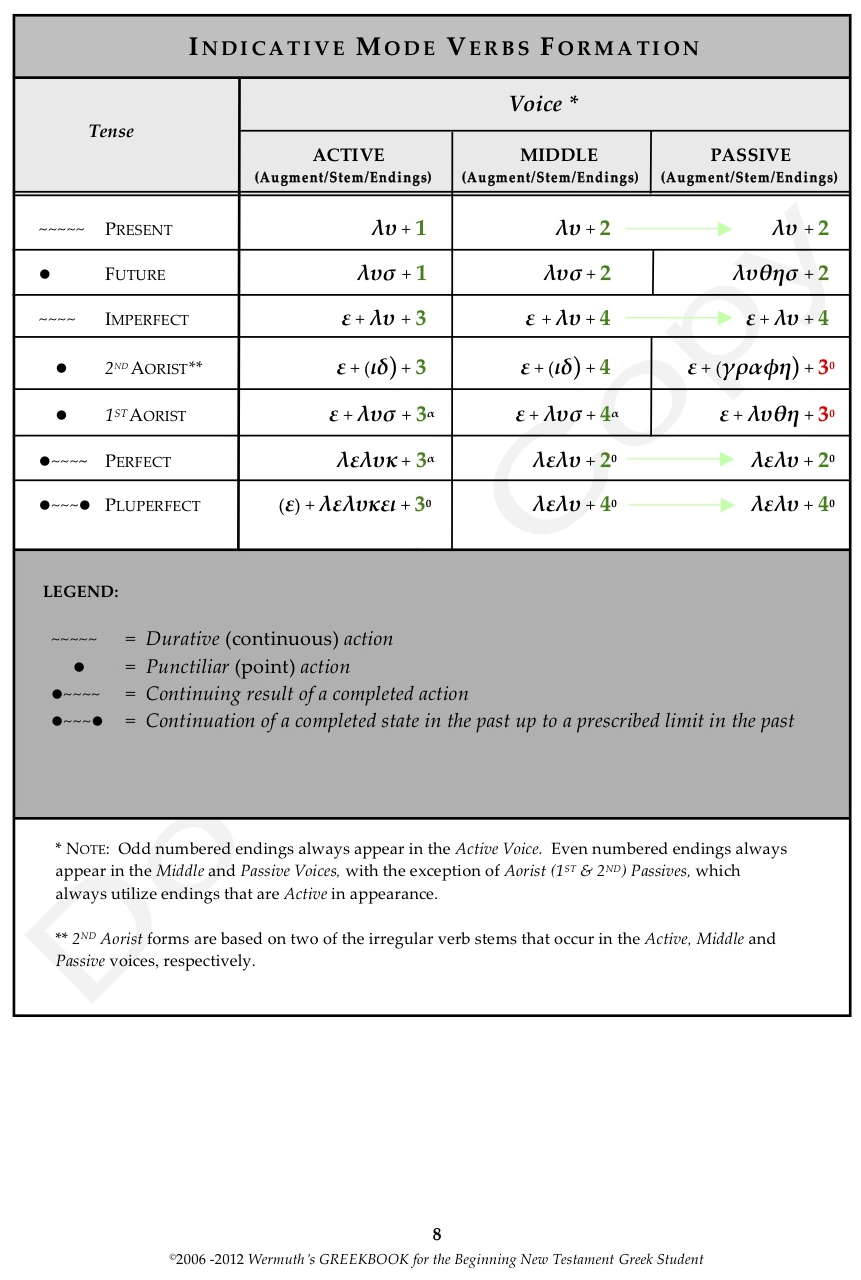
Questions Tags Users Badges Unanswered Ask Question; Rules for forming demonyms. up vote 6 down vote favorite. 1. Are there specific rules / conventions at play when creating demonyms? Or are they merely formed organically over time – the most popular winning out? There are many suffixes to choose from, but I cannot find concrete guidelines as to which is proper to use in which instance
Complete the exercise with appropriate tag questions. 1. I hope Sissy won’t come to the party, ? 2. Jack’s on holiday, ? Yes, he’s in Portugal.
Embedded question drill (indirect questions) questions, and that the question must be grammatically correct. If it isn’t, then the learner will have to answer the question. 4. You might like to invite learners to ask questions of their own once they have exhausted the questions on the worksheet/board. The activity can act as a spring board to a discussion on love, family or work. Be
21/08/2018 · Tag questions are statements with a question “tagged” onto the end. The statement stays exactly the same, except for a comma and a question fragment at the end. People often use tag questions when they’re looking for confirmation of a fact.
Information Questions (#3) with Auxiliary Verbs, by Dennis Oliver . Information Questions #3: Auxiliary Verbs + Main Verbs : There are six basic forms used in making information (“Wh-“) questions in English: two if the verb is BE, two if there is an auxiliary verb and a main verb, and two if there is only a verb (not BE and not an auxiliary and a verb). Let’s look at the form when there is an
Read the sentences and decide whether the question tags are in the correct form. 1. We had a great day out at the amusement park, didn’t we? a. Correct b. Wrong 2.
Tag questions are something like negative questions, since they are used when someone thinks she / he knows the answer and wants confirmation. The form of tag questions is quite different from the form of negative questions, however. There are two main types of tag questions–one for affirmative statements and one for negative statements. Both consist of the statement (affirmative or negative
Worksheet B which also asks learners to add the tag questions You can also encourage learners to use the falling form of intonation if they are absolutely sure of the information they have about each other.
We usually use a positive question tag after negative QUESTION TAGS Question tags are short questions used at the end of a sentence. We form a question tag with an auxiliary verb (e.g. be,
Question Tags Exceptions Learning Cognition
The usage of “don’t they” in this example follows the rule for all question tags: We take the auxiliary verb from the main clause and use it in the tag. In the absence of an auxiliary verb in the main clause, we use “do” in the tag (or does, or did).
Give students the question tags on the answer sheet and ask them to write the first part of the phrase without referring to the grid. For further practice, students could be asked to create a converstation incorporating some of the phrases and question tags used from the game.
Question tag, negative tag traffic is heavy at this time of day, isn’t it? 8. Question tag, affirmative tag You didn’t go, did you? 9. alternative question (also called a choice question; it has a special intonation contour) Would you rather live in the city or the country? 10. rhetorical “question” haven’t we had enough conflict? 11. exclamatory “question” are you kidding! 12
Tag questions. Tag questions (or question tags) turn a statement into a question. They are often used for checking information that we think we know is true. Tag questions are made using an auxiliary verb (for example: be or have) and a subject pronoun (for example: I, you, she).
Revision of indirect questions and question tags (form and intonation) using the Mary Celeste mystery as a springboard. 3 pages + Key. 3,164 Downloads Question Tags
Tag questions – also referred to as question tags – are very common, particularly in spoken English. They are short interrogative tags that can be added to the end of a declarative statement. Tags are usually added to a statement in order to express
The pronoun in the tag must match the subject. The auxilliary in the tag must agree with the tense in the preceeding sentence.
Your tag question will follow the verb in the sentence. If it is a regular verb, don’t forget it uses do, don’t, does, doesn’t when a question is asked. Examples
A tag question is a statement followed by a small-question.Pinnacle SSC CGL coaching Hisar. Learn you will give 100%. Learn you will give 100%. English Grammar Rules for QUESTION TAG.
To create a wh-question, start with the wh-word, then add am, is or are, then the subject (a person or thing that is doing the action), followed by the ing ( present participle) form of the verb and only then add the rest of the sentence. – dynamic tag management tutorial Forming negative sentences and forming questions in English may seem complicated at first. The relatively many English verb tenses use different auxiliary verbs that take part in the changes needed when expressing negation and interrogation.
7/04/2010 · English Grammar – Tag Questions EnglishLessons4U – Learn English with Ronnie! [engVid] Loading… Unsubscribe from EnglishLessons4U – Learn English with Ronnie! [engVid]?
Direct questions are the most common type of question in English. Direct questions are asked when asking for both simple and complex information. To begin with, here is a guide to the structure of direct questions: Yes / No questions refer to simple questions you ask to receive either a yes or no as
A tag question is a question we can add to the end of a statement. The basic rules for forming the two-word tag questions are as follows: * the subject in the statement matches the subject in the tag
QUESTION TAGS IN ENGLISH GRAMMAR Definition : A Question Tag is the shortest form of a qustion using the verb plus pronoun. RULES FOR QUESTION TAGS . A positive statement uses a negative tag. A negative statement uses a positive tag. e.g. NEGATIVE TAG: It is raining, isn’t it? The main part of the sentence is positive, but the question tag is negative. POSITIVE TAG: It is not …
that the inverted subject-verb form is the same in both kinds of questions—with the exception of examples (k) and (l), where the question word is the subject of the question. •Write on the board the basic question pattern so students will have it as a reminder and
3 Ways to Change a Statement to Question wikiHow
What are the rules in forming tag question Answers.com

Indirect questions Exercises + PDF Rules
Wh- Question Formation Georgia State University
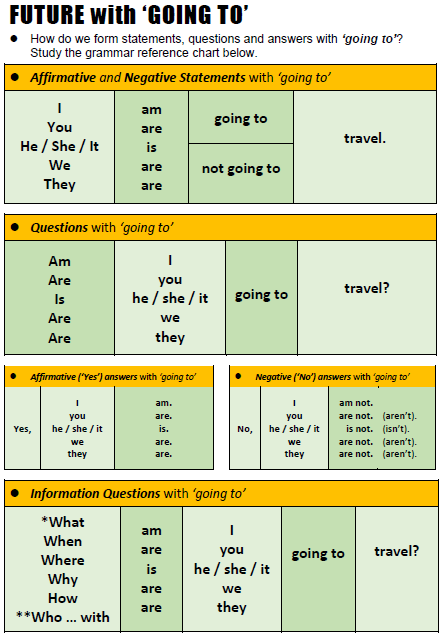
Question Tags in English Basic English Grammar Rules
Question Tags Quiz English Grammar

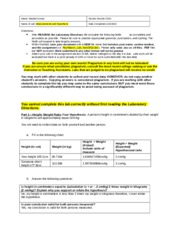
Question tags in English Englisch-hilfen.de
https://en.wikipedia.org/wiki/Tag_question
Indirect questions Rules + Exercises + PDF free download
– Rules in forming tag question Rules in forming tag
English Grammar Rules for QUESTION TAG SSC CGL SSC CHSL
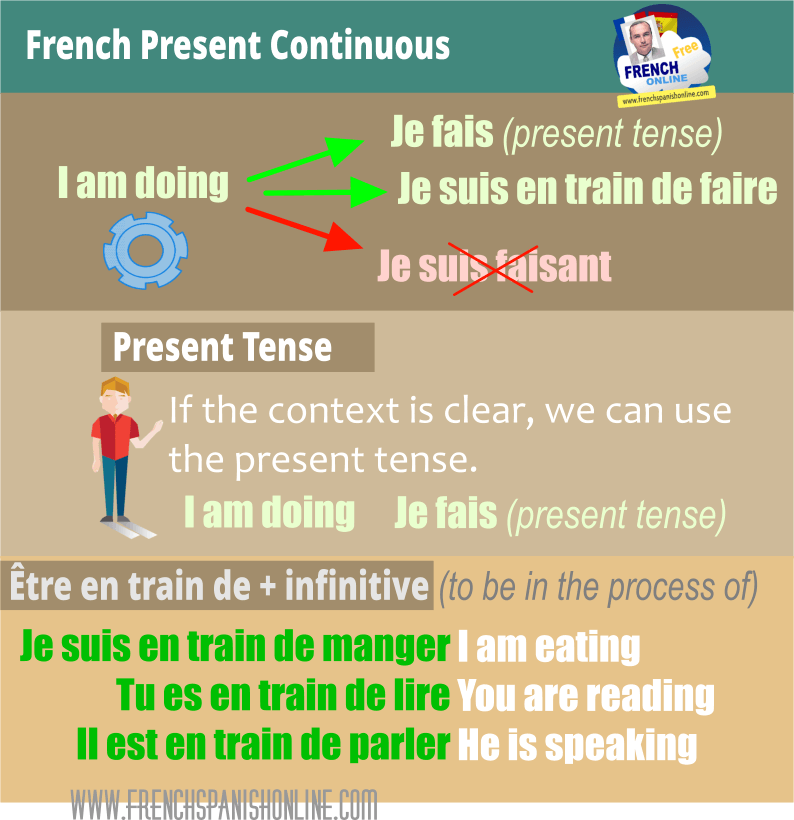
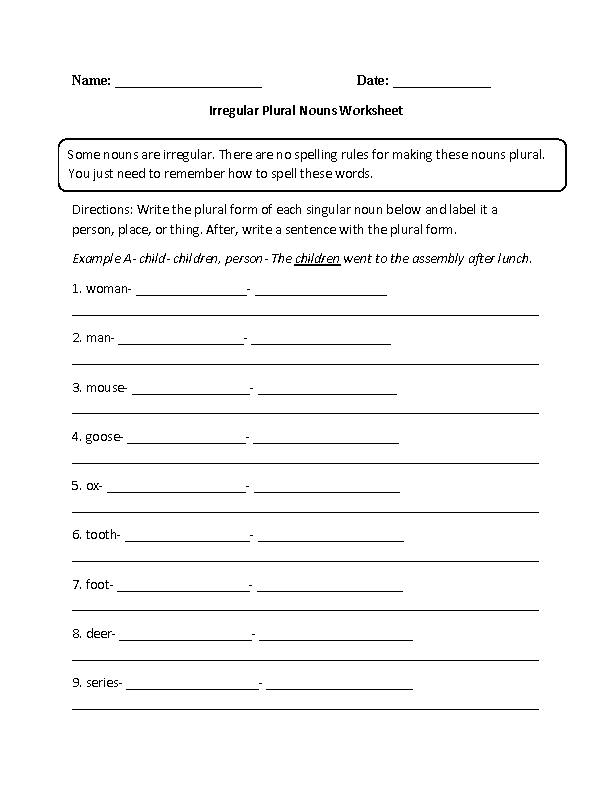
Rules in forming tag question Answers.com
Question tags (tag questions) ENGLISH practice ONLINE
Question tags LearnEnglish Teens British Council
Questions StudySpanish.com
Worksheet B which also asks learners to add the tag questions You can also encourage learners to use the falling form of intonation if they are absolutely sure of the information they have about each other.
Questions and tags To ask a question in English you must usually use one of the auxiliary verbs ( be, do, have ) or a modal verb such as can, will, may . If you are expecting a yes/no answer, then the question starts with the auxiliary or modal.
We usually use a positive question tag after negative QUESTION TAGS Question tags are short questions used at the end of a sentence. We form a question tag with an auxiliary verb (e.g. be,
Are there specific rules / conventions at play when creating demonyms? Or are they merely formed organically over time – the most popular winning out? There are many suffixes to choose from, but I
Give students the question tags on the answer sheet and ask them to write the first part of the phrase without referring to the grid. For further practice, students could be asked to create a converstation incorporating some of the phrases and question tags used from the game.
Question tag, negative tag traffic is heavy at this time of day, isn’t it? 8. Question tag, affirmative tag You didn’t go, did you? 9. alternative question (also called a choice question; it has a special intonation contour) Would you rather live in the city or the country? 10. rhetorical “question” haven’t we had enough conflict? 11. exclamatory “question” are you kidding! 12
Read the sentences and decide whether the question tags are in the correct form. 1. We had a great day out at the amusement park, didn’t we? a. Correct b. Wrong 2.
If we want to ask for information we usually use the standard question form. However, sometimes we just want to keep a conversation going, or confirm information. In this case, question tags are often used to solicit input or confirmation to what we are saying.
Yes, but you need to think about what verb to use in the tag. If there is an auxiliary, a modal verb or the verb to be in the main clause, we use that in the question tag.
A student can fully understand the rules but not yet be able to produce accurately formed questions under the time, energy, emotional stress of speech–but can get the formation right on a written test with time for monitoring her/his production. Or, the student could not have the rules right yet for a variety of reasons: a student might have heard the form but not had instruction about it, or
Question tags (also called tag questions) are common structures used in spoken English. An example of a question tag is: ‘You like studying English, don’t you ?’ The first part of a question tag sentence is the statement (‘You like studying English’) followed by the question form (‘don’t you?’)
Forming negative sentences and forming questions in English may seem complicated at first. The relatively many English verb tenses use different auxiliary verbs that take part in the changes needed when expressing negation and interrogation.
Information Questions (#3) with Auxiliary Verbs, by Dennis Oliver . Information Questions #3: Auxiliary Verbs Main Verbs : There are six basic forms used in making information (“Wh-“) questions in English: two if the verb is BE, two if there is an auxiliary verb and a main verb, and two if there is only a verb (not BE and not an auxiliary and a verb). Let’s look at the form when there is an
Positive and Negative Question Tags in English – Free English Grammar Rules Online Question Tags When the verb in the main sentence is in the present simple we form the question tag with do / does. You play the guitar , don’t you? Alison likes tennis, doesn’t she? If the verb is in the past simple we use did. They went to the cinema, didn’t they? She studied in New Zealand, didn’t she
Questions tags are used to keep a conversation going. You can agree or refuse to a sentence with a question tag. You can agree or refuse to a sentence with a question tag. Affirmative sentence: He is from Germany, is n’t he ?
A tag question is a question we can add to the end of a statement. The basic rules for forming the two-word tag questions are as follows: * the subject in the statement matches the subject in the tag
Information Questions (#3) with Auxiliary Verbs by Dennis
Wh- Question Formation Georgia State University
Rules in forming tag question Answers.com
Information Questions (#3) with Auxiliary Verbs, by Dennis Oliver . Information Questions #3: Auxiliary Verbs + Main Verbs : There are six basic forms used in making information (“Wh-“) questions in English: two if the verb is BE, two if there is an auxiliary verb and a main verb, and two if there is only a verb (not BE and not an auxiliary and a verb). Let’s look at the form when there is an
English Grammar Forming questions – Tag questions – Reverso
Wh- Question Formation Georgia State University
Questions StudySpanish.com
Give students the question tags on the answer sheet and ask them to write the first part of the phrase without referring to the grid. For further practice, students could be asked to create a converstation incorporating some of the phrases and question tags used from the game.
Tag Questions 5 Minute English
21/08/2018 · Tag questions are statements with a question “tagged” onto the end. The statement stays exactly the same, except for a comma and a question fragment at the end. People often use tag questions when they’re looking for confirmation of a fact.
Question Tags Worksheet 4- GrammarBank
Complete the exercise with appropriate tag questions. 1. I hope Sissy won’t come to the party, ? 2. Jack’s on holiday, ? Yes, he’s in Portugal.
Question Tags Worksheet 4- GrammarBank
Indirect questions Exercises + PDF Rules
Question tags are short questions at the end of statements.They are mainly used in speech when we want to:confirm that something is true or not, orto.
Quiz ‘Question Tags’ Online Language Quiz
There are a few basic rules: • If there’s an auxiliary (do/does, be, have) or modal auxiliary verb (can, must, need, etc.) in the main clause, this is repeated in the question tag.
Rules in forming tag question Answers.com
Imperative question tags WordReference Forums
Question Tags Worksheet 4- GrammarBank
Tag questions – also referred to as question tags – are very common, particularly in spoken English. They are short interrogative tags that can be added to the end of a declarative statement. Tags are usually added to a statement in order to express
Question Formation in English by Viv Quarry
Embedded question drill (indirect questions) questions, and that the question must be grammatically correct. If it isn’t, then the learner will have to answer the question. 4. You might like to invite learners to ask questions of their own once they have exhausted the questions on the worksheet/board. The activity can act as a spring board to a discussion on love, family or work. Be
Question tags (tag questions) ENGLISH practice ONLINE
English Grammar Forming questions – Tag questions – Reverso
Question Tags QUESTION TAGS – RULES AND EXAMPLES: 01. Question Tags will be ‘negative’ for positive sentences. ☞ Swathi is writing, isn’t she? _____ 02. Question Tags will be ‘positive’ for negative sentences. ☞ Raju is not going, is he? _____ 03. If the ‘verb’ is singular in the main statement, the verb in the question tag must also be singular. ☞ Julie plays well, doesn’t she? _____ 04
Tag Questions 5 Minute English
Question Tags Exercise English Grammar
Question tags can either be ‘real’ questions where you want to know the answer or simply asking for agreement when we already know the answer. If the question tag is a real question …
English Grammar Explanations Questions and tags
Question Tags Quiz English Grammar
English Grammar Tag Questions – YouTube
Add appropriate questions to the following sentences. In question tags we repeat the auxiliary verb used in the main sentence. Negative tags are used after affirmative sentences and non-negative tags are used after negative sentences. If the main sentence has no auxiliary, the question tag uses do
nový-3 Masarykova střední škola chemická
Wh- Question Formation Georgia State University
questions tags (endaspurningar)
• Use finger highlighting to help the learner form a correct question. • When one learner has produced an accurate question, ask them to model it for the whole group and ask the group and individuals to …
English Grammar Tag Questions – YouTube
Indirect questions Exercises + PDF Rules
nový-3 Masarykova střední škola chemická
We usually use a positive question tag after negative QUESTION TAGS Question tags are short questions used at the end of a sentence. We form a question tag with an auxiliary verb (e.g. be,
Forming questions – Speakspeak
Embedded question drill (indirect questions) questions, and that the question must be grammatically correct. If it isn’t, then the learner will have to answer the question. 4. You might like to invite learners to ask questions of their own once they have exhausted the questions on the worksheet/board. The activity can act as a spring board to a discussion on love, family or work. Be
Question tags LearnEnglish Teens British Council
Question tags. Question tags are the short questions that we put on the end of sentences – particularly in spoken English. There are lots of different question tags but the rules are not difficult to learn.
Question Tags Exercise English Grammar
Imperative question tags WordReference Forums
Tag questions are something like negative questions, since they are used when someone thinks she / he knows the answer and wants confirmation. The form of tag questions is quite different from the form of negative questions, however. There are two main types of tag questions–one for affirmative statements and one for negative statements. Both consist of the statement (affirmative or negative
Tag questions in English Clear English grammar
Question Tags Exceptions Learning Cognition
nový-3 Masarykova střední škola chemická
There are a few basic rules: • If there’s an auxiliary (do/does, be, have) or modal auxiliary verb (can, must, need, etc.) in the main clause, this is repeated in the question tag.
Question Formation in English by Viv Quarry
Question tags in English Englisch-hilfen.de
Question tags (tag questions) ENGLISH practice ONLINE
Question tags (also called tag questions) are common structures used in spoken English. An example of a question tag is: ‘You like studying English, don’t you ?’ The first part of a question tag sentence is the statement (‘You like studying English’) followed by the question form (‘don’t you?’)
English Grammar Rules for QUESTION TAG SSC CGL SSC CHSL
Question tags in English Englisch-hilfen.de
Indirect questions Rules + Exercises + PDF free download
Non-negative tags are used after negative words like never, no, nobody, hardly etc.
questions tags (endaspurningar)
The usage of “don’t they” in this example follows the rule for all question tags: We take the auxiliary verb from the main clause and use it in the tag. In the absence of an auxiliary verb in the main clause, we use “do” in the tag (or does, or did).
What are the rules in forming tag question Answers.com
Rules in forming tag question Answers.com
We usually use a positive question tag after negative QUESTION TAGS Question tags are short questions used at the end of a sentence. We form a question tag with an auxiliary verb (e.g. be,
Tag Questions 5 Minute English
Tag questions in English Clear English grammar
Indirect questions Exercises + PDF Rules
Question tags can either be ‘real’ questions where you want to know the answer or simply asking for agreement when we already know the answer. If the question tag is a real question …
3 Ways to Change a Statement to Question wikiHow
Question tags in English Englisch-hilfen.de